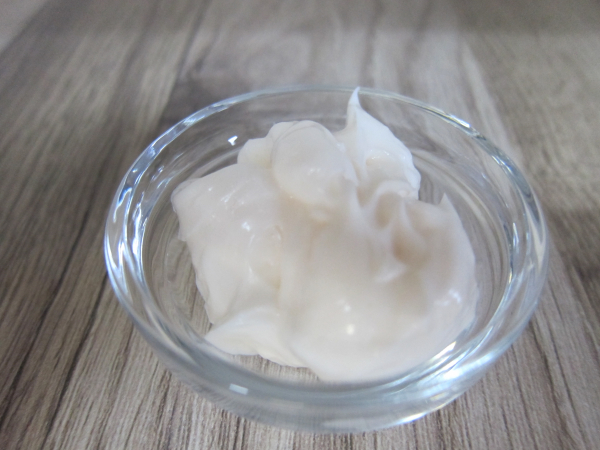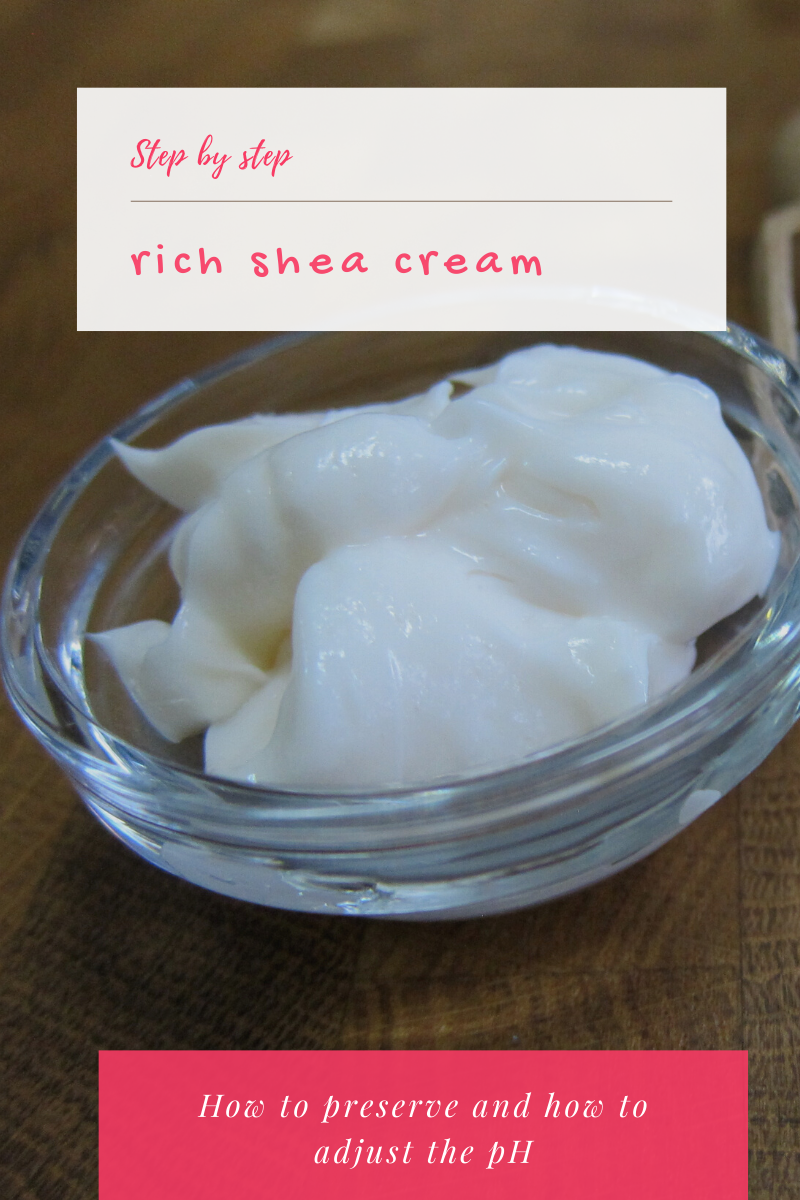For today's tutorial we are sharing with you a very simple but impressive rich shea cream. A rich and ultra-pampering cream must not necessarily feel heavy and greasy and that is exactly the characteristics of this lovely creation. I have started with a very KISS formulation and will jazz it up in the coming tutorials by adding active and functional ingredients.
One important point:
In the video you'll see the card for "calendula hydrosol" but at the very last minute we swapped the hydrosol with distilled water. This is
1- for the simplicity
2- The preservative we are using does not like most of the hydrosol. You may still be able to prepare this formulation with a hydrosol and it may remain stable and intact @RT for weeks and months but under accelerated conditions, you'll observe a colour change from this luxurious white to some oragen-pink shades.
That is the interaction of the preservative (Spectrastat G2 N and G2 natural) with metal ions which are present in the hydrosol.
Second important point:
Although for the sake of simplicity I am using a preservative that works independent of the pH, I still want the product to have a skin-friendly pH for everyday applications. This means I aim a pH between 5,0-5,5 and since I know that with an emulsion with this viscosity reducing the pH at the end is easier than increasing the pH, I am using arginin in the water phase to increase the pH slightly.
Third important thing:
The viscosity of the cream increases within the first 48 hours after production. Wait for the viscosity to reach its climax before you decide which container you shall use for the cream.
We recommend using airless cream jars (that we show in the video and we'll have them in our shop within a few weeks)
Now that everything is clear let's jump to the formulation and procedure
 Formulation:
Formulation:
| Phase A |
|
| Distilled or deionized water |
to 100,0% |
| Natural chelator PA-3 |
0,1% |
| L-Arginin |
0,3% |
| NaPCA |
2,0% |
| Phase B |
|
| Solagum AX |
0,3% |
| Phase C |
|
| Polyaquol 2W |
5,0% |
| Shea butter |
10,% |
| Babassu oil |
10,0% |
| Tocopherol |
0,3% |
| Phase D |
|
| Spectrastat G2 Natural |
1,0% |
| Lavender oil |
0,5% |
| Lactic acid 80% |
to adjust the pH |
Procedure:
1- Add all of the ingredients in phase A to the water and blend
2- Disperse and hydrate the gum in the water phase @RT
3- Heat both oil and water phase in a water bath between 75-80 oC
4- Emulsify the oil phase in the water phase
5- Cool down under stirring.
6- Prepare a 10% dilution in distilled water and measure the pH. In our case it was 5,95
7- Add the preservative and the essential oil. Prepare another 10% dilution and remeasure the pH. In our case it was 5,86 which is slightly higher than our aim
8- Add lactic acid to reduce the pH. Make another dilution and measure the pH again. In our case it was 5,38 which is perfectly in range
9- Take your microkit and stability samples and fill the rest in suitable containers
Watch the video here.
Stay safe and creative


